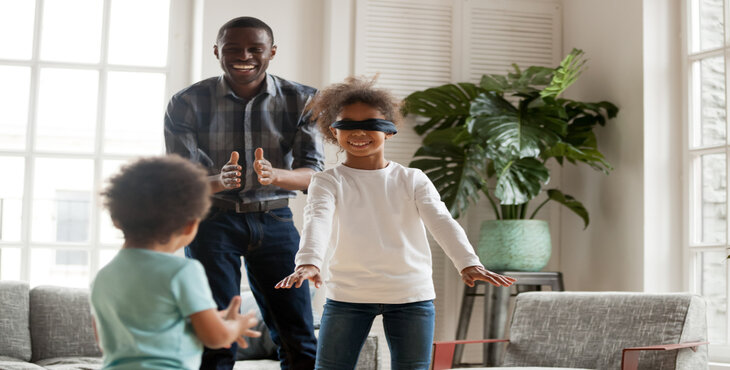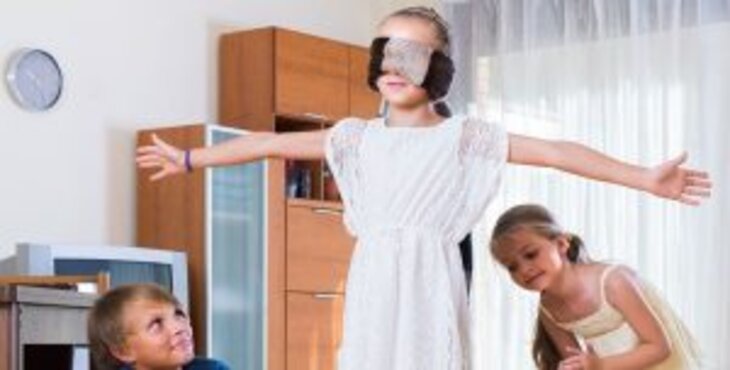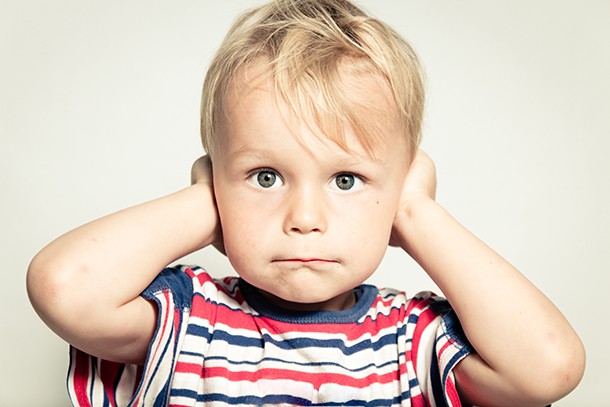Blindfolds can be a very important thing to have in a child’s toy or play box. When the sense of sight becomes the more dominant sense, children rely on that sense too much, which is why blindfold games are very important to their development. Being blindfolded means that they have to use their other senses to discover the world around them. Learn how blindfold games benefit for children.
Blindfold games are very important for trust, teamwork, and “seeing” the world differently. One could also suggest that blindfolds can help parent-child bonding as blindfold games are good for developing the sense of touch, which can help enjoy a reassuring cuddle when upset.
Blindfold games are used for birthday parties, sensory games at school, and fun at home.

Table of Contents
How Blindfolds Games Are Beneficial For Children?
Blindfold games can offer several benefits for children, both in terms of physical and cognitive development. Here are some advantages:
1. Enhanced Sensory Awareness
When a child is blindfolded, their reliance on other senses, such as touch, hearing, and smell, is heightened. This helps in developing and refining these senses, leading to increased sensory awareness.
2. Spatial Awareness and Coordination
Blindfold games often involve navigating through space without relying on vision. This can improve a child’s spatial awareness, balance, and coordination as they learn to move and interact with their environment based on other sensory inputs.
3. Communication Skills
Many blindfold games require communication between participants. Verbal communication becomes crucial as children need to convey information, give directions, or listen to instructions. This can foster better communication skills and teamwork.
4. Problem-Solving and Critical Thinking
Blindfolded activities often involve problem-solving, as children need to figure out how to navigate or complete a task without visual cues. This encourages critical thinking skills and the ability to adapt to different situations.
5. Trust and Team Building
Blindfold games often require trust between participants. If guiding someone blindfolded or being guided, children learn to trust others and work collaboratively to achieve a common goal. This can contribute to the development of teamwork and social skills.
6. Creativity and Imagination
Blindfolds eliminate the visual stimulus, prompting children to rely on their imagination and creativity to interpret their surroundings. This can enhance their ability to think outside the box and come up with imaginative solutions to challenges.
7. Emotional Regulation
Blindfold games can sometimes evoke feelings of uncertainty or vulnerability. Engaging in such activities provides an opportunity for children to learn how to manage and regulate their emotions, building emotional resilience.
8. Fun and Engagement
Most importantly, blindfold games are generally enjoyable for children. Fun and play are essential components of a child’s development, and blindfolded games provide a unique and entertaining way to learn and grow.
What are the Best Things to Use For a Blindfold?
When choosing materials for a blindfold, it’s important to prioritize safety, comfort, and ease of use. Here are some suggestions for materials you can use to create effective and safe blindfolds:
Soft Fabric
Use soft fabrics such as cotton or fleece to ensure comfort against the skin.
Avoid materials that may cause irritation or allergies.
Elastic Bands
Attach elastic bands to the blindfold to ensure a secure but gentle fit around the head.
Choose wide, soft elastic bands to prevent discomfort.
Adjustable Straps
Consider making the blindfold with adjustable straps to accommodate different head sizes and provide a customized fit.
Velcro Closures
Velcro closures can be convenient for easily securing and adjusting the blindfold.
Ensure that the Velcro is not too harsh against the skin.
Padding
Add a thin layer of padding to enhance comfort and prevent any pressure on the eyes.
Ensure the padding does not obstruct the child’s ability to hear or affect the overall fit.
Breathable Material
Choose materials that allow some airflow to prevent overheating, especially during physical activities.
Contoured Eye Masks
Consider using contoured eye masks designed to cover the eyes comfortably without putting pressure on them.
Contoured masks can provide a more secure fit, ensuring that the blindfold stays in place during activities.

Blindfold Games for Kids
Here are some practical suggestions for blindfold sensory play with your children.
Start off by blindfolding yourself and explaining what a blindfold is, then blindfold your child on your knee and give them their teddy bear to feel and guess; if this works, you are ready to move on,
Here are some more suggestions.
- Feel toys or people’s faces and identify them.
- Smell different objects or oils.
- Guess who is talking just by hearing their voice.
- Serve afternoon tea after you blindfold them.
Or just play the traditional blindfold games like Blindman’s Bluff or Pin the Tail on the Donkey. You could encourage your children to go to sleep in the dark by playing blindfold games in their room, especially with their soft toys. There are more suggestions on my website and in my book, which can be purchased there.

Conclusion
It is impossible to emphasize the importance of blindfolds in sensory play for kids. These straightforward but functional instruments bring up a world of sensory discovery, encouraging imagination, creativity, and cognitive growth. Blindfolds help kids develop a deeper knowledge of their surroundings by encouraging them to use their other senses while momentarily removing their sense of sight.
Therefore, introducing blindfolds into sensory play may be a wonderful and engaging experience for kids of all ages, whether it’s a game of taste-testing while blindfolded or an imagined voyage through touch and sound.


























































